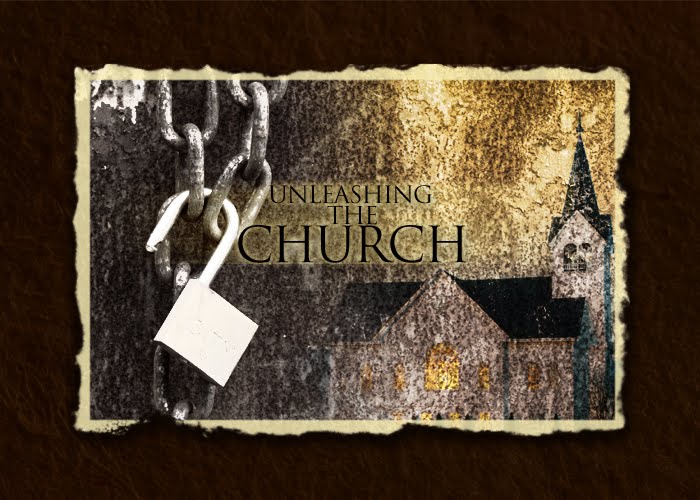During the period of Church History dominated by the Liberal/Fundamentalist Controversies, 1925-1965, lay people were forced into both passive church ministry roles and isolated lifestyles. It was important that only those who really understood their church’s theological distinctives be able to exert influence in the church. Therefore lay people expected their leaders to be professionally trained and passionately committed to both their church’s distinctives and social lifestyle. After all the clergy was paid to be knowledgeable and passionate.
Lay people, on the other hand, were not expected to be passionate about their personal call to ministry. But, they were expected supportive of their leaders through regular attendance and financial support, (nickels and noses). And in conservative churches they were expected to separate themselves from the world; which meant no cards, dancing, listening to Elvis or, God forbid, watch him shake his pelvis in the movies. Churches successfully structured themselves so that their people could only travel within “gated communities.”
1960s Enter: The Community Church
By the 1960s many church leaders were growing weary of both the theological controversies, and petty behavioral issues. The most telling evidence of just how many church leaders had become weary of these issues is demonstrated by the large number and wide variety of churches that began using the label Community to identify themselves. The label Community was not widely embraced because it has a nice ring to it, rather it was embraced because it carries a clear message. The message is “life and death really are more important than right and wrong.”
As more pastors became convinced that life and death are more important than right and wrong; they became reticent to put their denominational or non-denominational label in their church’s name. The emergence of The Community Church can be traced to the desire to communicate that everyone, regardless of their behavior or beliefs, is truly welcome. Or to say it another way, the Community Church message is, “relationships are our top priority,” we will deal with right and wrong latter, when it is more appropriate.
The John Knox Image
My friend Frank took an open bus tour in Edinborough Scotland. As the bus passed the home of the great Presbyterian reformer, John Knox, the guide said, “There is where the great reformer John Knox lived, he preached against everything in life that was fun.” In the 1960s more and more pastors wanted to avoid the “John Knox Image,” To do so they disguised their real identity with the name Community.
Community is the most popular of the new generic names, but it certainly isn’t the only one. Some churches became Family churches and still others simply became The Church By The Side Of The Road, or The Church On The Corner or Northwest Church, etc. They are names that tell us nothing about either the beliefs or moral codes of the people. Ask pastors why their churches have embraced more generic labels; and they will likely tell you that they don’t want potential visitors to be turned off by the “baggage” contained in their denominational, (or non-denominational), labels. It was a huge change for church leaders to put their theological distinctives and moral convictions on the back burner. It doesn’t mean that they abandoned the distinctives or convictions. It does mean that connecting with people became a priority over defending distinctives.
Kicked Out Over a Name Change
In 1971 Frank became the pastor of Lakeridge Baptist Church in Denver. The church had a troubled past and needed a new start. The leaders of the church felt that part of the new start should be a new name. The church was in a subdivision called Lakeridge, but the larger area was called Bear Valley. So the church got rid of both Lakeridge and Baptist and renamed itself simply Bear Valley Church.
The local Association of Southern Baptists was not happy with the change of names. Changing from Lakeridge to Bear Valley was not a problem. But dropping Baptist was a big problem. The local Association of Southern Baptist churches disassociated themselves from Bear Valley Church. (But Bear Valley remained part of the Southern Baptist convention on a national level). Today local church associations rarely disassociate themselves from churches that don’t use the denominational label in their name, there are just too many new “community” churches.
Denominational labels and the name Frank have something dreadful in common. Whenever you meet someone named Frank chances are good that he is 50 years old or older. Parents don’t name their kids Frank anymore. And since the 1980s church names seldom “admit” their denominational ties, if they don’t have to.
By the early 1980s, some Community churches took the next logical step and became Seeker churches. Let's see how that is working out tomorrow.
Followers
Subscribe to:
Post Comments (Atom)
About Me

- Rich
- I am a slave to no man or institution. I have worked with Frank Tillapaugh for thirty years and most of the ideas are work we would like to share.
The next generation

God thank you for two amazing young leaders
Looking Forward

Each year I get to spend time with young leaders and the gap is growing between them and my generation, why?
Popular Posts
-
I have watched new pastors burn out in less than a year...why? Fuller Institute did a survey and found that 80% of pastors believe that past...
-
General Calling and Special Calling Soon after the Roman emperor, Constantine, converted to Christianity in 315 A.D. churches began to profe...
-
I saw one of my friends (Wes, he is a follower of this blog, God bless him) tonight and he told me after reading this blog he was surprised ...
-
When 20% of the people do 80% of the work in a church, the church leaders usually think that they have an 80% problem. ...
-
I am taking a break from my series to talk about something that just happen. I just met Gavin, he arrived today. His parents Dan and Steph C...
-
If we ask, “what would Jesus do in His new body, i.e. the church; that would be a continuation of what he did in his original body?” The ans...
-
And, believe it or not, a strong emphasis on edification does not often generate mission. Mission potential isn't dependent on how well...
-
Several years ago my friend Frank took a walking tour in London that ended up at Wesley’s chapel. As the tour group ap...
-
Nothing influences the environment of a church as much as the preaching. It is through preaching that people understand how their pastor vie...
-
Ok yesterday I had one response to my blog and while it was thoughtful I was reminded that words on a screen do not always convey the experi...

No comments:
Post a Comment